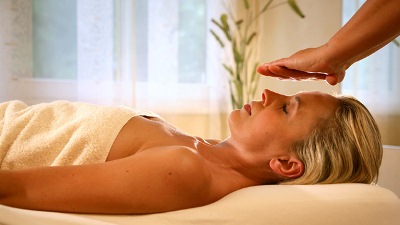How Massage Can Help With Stress
The planet’s ever-developing technology has created a world of automated conveniences, where little movement is required and this impairs our ability to connect with our bodies, and so a growing number of people are responding to this disconnection by going to massage therapists for relaxation.
Massage is the manipulation of the soft-tissues of the body and it helps to ease stress and muscular tension, relieve pain from injuries, and speed healing from certain acute and chronic conditions.
Today millions of people worldwide visit massage therapists as a form of regular health-care maintenance and it has been shown to increase the body’s production of pain-killing endorphins and the mood-altering hormone serotonin.
It can also slow the release of the stress hormone cortisol and for this reason massage is often prescribed as an adjunctive therapy for people whose immune systems are compromised by stress.
Many body tensions may be the result of lifelong patterns of tension or they may be caused by current or past physical trauma. Be it a stiff neck, rounded shoulders like you are carrying the weight of the world, or a sunken, withdrawn chest that tries to shield its owner from life’s stresses, massage therapists act as facilitators or catalysts of change to the body structure or posture, working with you to address habitual body patterns.
Most of us have a predominant holding pattern that may be one of those listed above, and many of us have combinations of holding patterns. It is the massage therapist’s contact with the body or movement of the body that help’s you gain insight into your pattern of holding, or lack of flow, and makes you aware of the increased energy it takes to hold that pattern.
This way you can slowly learn to reduce or eliminate the holding pattern, which is often a defence mechanism.
Therapeutic massage is no longer perceived strictly as a luxury and today there are some eighty different types of massage and related forms of bodywork.
Traditional European massage includes methods based on conventional Western concepts of anatomy and physiology and includes Swedish massage, the most widely employed massage technique in the world today.
Contemporary Western massage is also based on modern concepts of anatomy, and includes a wide variety of manipulative techniques that go beyond the original framework of Swedish massage such as sports massage.
Acupressure and Shiatsu which, although not founded in traditional Chinese medicine, are intended to affect the energy field that is believed to surround and infuse the human body by applying pressure or by the passage or placement of the hands in or through the energy field.
Other examples of energy methods include polarity therapy and Reiki. Many massage practitioners use a combination of these methods, depending on what the client needs at the time.

To find a suitable therapist for you, try asking friends or trusted health-care practitioners for referrals and recommendations. Before you make an appointment with a therapist, find out whether he or she is nationally certified, ask about what kind of training the therapist has had and find out whether he or she specialises in a particular kind of massage.





0 Comments
You can be the first one to leave a comment.